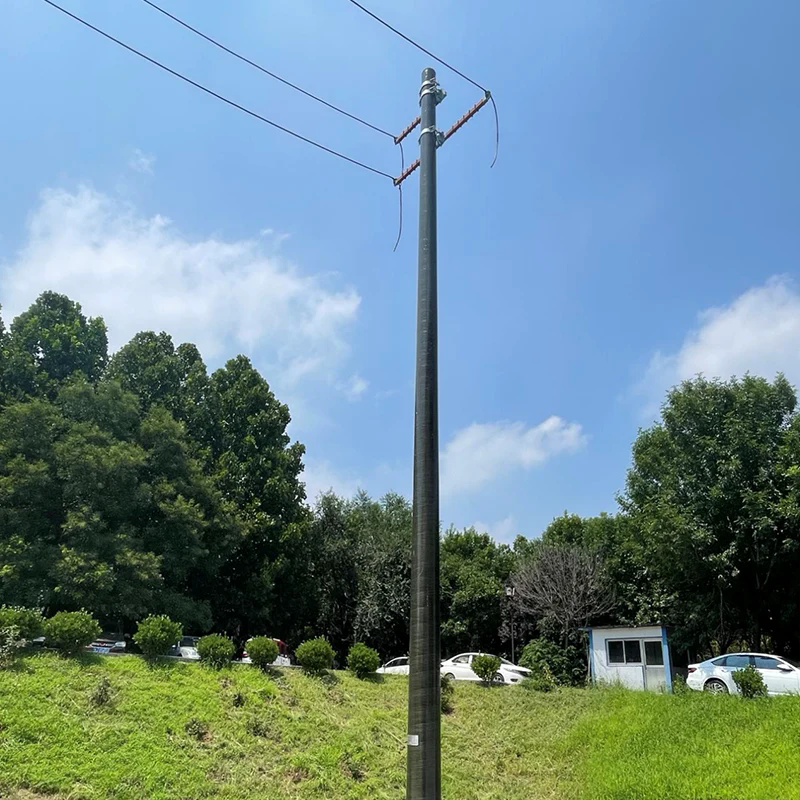Composite Utility Poles: The Future of Sustainable and Durable Infrastructure
2024-08-26
In the quest for more sustainable and resilient infrastructure, composite utility poles are emerging as a game-changer. These advanced poles are transforming the way utilities manage power distribution, telecommunications, and other critical services. Combining strength, durability, and environmental benefits, composite utility poles offer a modern solution to age-old challenges in infrastructure. In this blog, we’ll explore what composite utility poles are, their key features, benefits, and why they are becoming increasingly popular in the utility industry.
What Are Composite Utility Poles?
Composite utility poles are made from advanced composite materials, typically a combination of fiberglass and resin. Unlike traditional utility poles, which are usually made from wood or steel, composite poles leverage the properties of these modern materials to offer enhanced performance and longevity.
Composite poles are designed to support various utilities, including electrical power lines, telecommunications cables, and street lighting. They are used in a variety of environments, from urban areas to remote rural locations, and are known for their ability to withstand harsh conditions while providing reliable support.
Key Features of Composite Utility Poles
1. Material Composition: Composite utility poles are primarily made from fiberglass reinforced polymer (FRP) or other composite materials. This composition provides superior strength-to-weight ratios compared to traditional materials.
2. Corrosion Resistance: One of the standout features of composite poles is their resistance to corrosion. Unlike wood poles, which can rot and degrade over time, composite poles are impervious to moisture and chemicals, making them ideal for a wide range of environments.
3. Lightweight: Composite poles are significantly lighter than wood or steel poles, which simplifies transportation and installation. The reduced weight also lowers the structural load on foundations and supports.
4. Longevity: Composite poles have a much longer lifespan compared to traditional materials. They are designed to withstand extreme weather conditions, UV radiation, and physical wear, resulting in reduced maintenance and replacement costs.
5. Design Flexibility: Composite poles can be manufactured in various shapes, sizes, and colors, offering flexibility in design and aesthetics. This allows them to blend seamlessly into different environments and meet specific utility requirements.
6. Non-Conductive Properties: Many composite poles are non-conductive, which enhances safety by reducing the risk of electrical accidents. This makes them suitable for use in high-voltage applications.
7. Environmentally Friendly: Composite materials used in utility poles are often recyclable, contributing to sustainability efforts. The longer lifespan of composite poles also means fewer replacements and less waste.
Benefits of Composite Utility Poles
1. Enhanced Durability: The resistance to corrosion, rot, and environmental damage ensures that composite utility poles maintain their integrity and performance over time. This reduces the need for frequent repairs and replacements.
2. Cost-Effective: Although the initial cost of composite poles may be higher than traditional materials, the long-term savings in maintenance, replacement, and operational costs often outweigh the upfront investment.
3. Improved Safety: The non-conductive properties of composite poles and their ability to withstand extreme conditions contribute to safer utility operations. This minimizes the risk of accidents and improves overall safety for both the public and utility workers.
4. Reduced Environmental Impact: By using materials that are resistant to decay and reducing the frequency of replacements, composite poles help lower the environmental impact associated with utility infrastructure.
5. Operational Efficiency: The lightweight nature of composite poles simplifies handling and installation, leading to faster project completion and reduced labor costs. Their strength and durability also support efficient power distribution and telecommunications.
6. Aesthetic Versatility: Composite poles can be customized in terms of design and color, allowing for aesthetically pleasing solutions that blend with the surroundings. This is particularly valuable in urban and residential areas.
Applications of Composite Utility Poles
1. Power Distribution: Composite poles are used to support electrical power lines, offering a reliable and long-lasting solution for power distribution in various settings, from residential neighborhoods to industrial areas.
2. Telecommunications: In the telecommunications industry, composite poles support antennas, cables, and other equipment. Their durability and resistance to interference make them ideal for maintaining communication networks.
3. Street Lighting: Composite poles are employed for street lighting, providing a durable and attractive option for illuminating roads and public spaces. Their resistance to weather conditions ensures consistent lighting performance.
4. Traffic Sign Support: Composite poles are used to support traffic signs and signals, benefiting from their strength and resistance to environmental factors. This ensures that signage remains intact and visible over time.
5. Rural and Remote Areas: Composite utility poles are particularly valuable in remote and rural areas where traditional materials may not be practical. Their durability and resistance to harsh conditions make them suitable for challenging environments.
Choosing the Right Composite Utility Pole
1. Load Requirements: Determine the load-bearing capacity needed for your specific application. Composite poles are available in various strengths, so selecting the right one is crucial for ensuring stability and performance.
2. Environmental Conditions: Consider the environmental conditions where the pole will be installed. Composite poles are designed to withstand various weather conditions, but specific requirements may influence the choice of material and design.
3. Design and Aesthetics: Choose a design and color that complements the surrounding environment and meets aesthetic preferences. Composite poles offer flexibility in design, allowing for customized solutions.
4. Regulatory Compliance: Ensure that the composite poles meet industry standards and regulatory requirements for safety and performance. This helps ensure that the poles are suitable for their intended use and comply with local regulations.
5. Budget Considerations: Evaluate the total cost of ownership, including installation, maintenance, and replacement. While composite poles may have a higher initial cost, their long-term benefits often justify the investment.
Maintenance and Care Tips
1. Regular Inspections: Periodically inspect composite poles for signs of damage or wear. Although composite materials are highly durable, regular checks help ensure continued performance and safety.
2. Cleanliness: Keep the poles clean and free from debris to maintain their appearance and functionality. Use appropriate cleaning methods to avoid damaging the material.
3. Repair and Replacement: Address any issues promptly to prevent further damage. Composite poles are designed to be low-maintenance, but timely repairs can extend their lifespan.
4. Documentation: Maintain records of installation, maintenance, and inspections to track the condition and performance of the poles over time.
Conclusion
Composite utility poles represent a significant advancement in infrastructure technology, offering a range of benefits that enhance durability, safety, and environmental sustainability. Their ability to withstand harsh conditions, combined with their lightweight and customizable design, makes them a valuable asset in modern utility operations. By embracing composite utility poles, utilities and municipalities can invest in a future-proof solution that supports efficient and reliable infrastructure while minimizing environmental impact. As technology continues to evolve, composite utility poles are poised to play an increasingly important role in shaping the future of utility management and infrastructure development.



